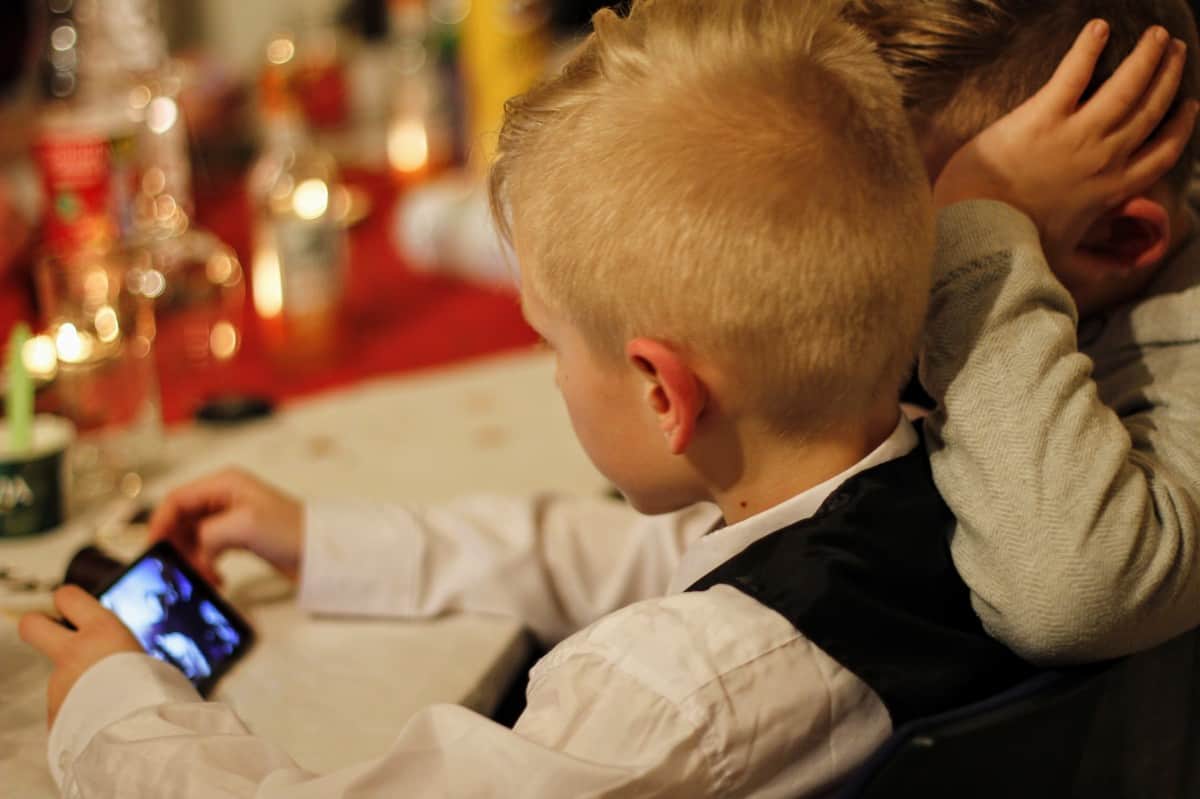What can we do as parents when screen problems begin to emerge?
Here’s the latest video from my Tech Happy Life YouTube channel. There is much greater detail in my book, Tech Generation: Raising Balanced Kids in a Hyper-Connected World. It’s through Oxford University Press and is available now! Cheers!
Transcript provided below.
Recap Of The Tech Happy Life Model
Hello! This is Tech Happy Life with Dr. Mike Brooks. In today’s episode we’re going over the Yellow Light Level of the Tech Happy Life Model. You might recall that there are four levels of the model. The first is the foundation — it’s about building a relationship. The second level of our model is the Green Light or Preventative Level, which we went over last week. Today, we’re going over the Yellow Light Level, which is to address emerging problems. The last level, which we’ll cover in the next episode is the Red Light Level, which is about intervening when serious problems have emerged.
Entering The Yellow Light Level
At the Yellow Light Level, screen time has become unbalanced and problems are starting to emerge. Now, how do you know we’ve gone from green to yellow? The problems that are emerging are:
- Frustration when screen time is being limited or denied (chronic and/or strong emotional reactions)
- Complaining a lot of being bored when not on the screen
- Screen time becoming an ongoing source of parent-child tension
- Slipping grades
- Chronic sleep loss (not mentioned in video, but it is a warning sign)
Collaborative Problem-Solving
When problems first start to emerge, a wonderful strategy to use is called Collaborative Problem-Solving. I first encountered this from Dr. Ross Greene and I’ve been using it ever since. Here’s how it works. A lot of times when kids are getting off-course there’s an assumption that kids don’t care about succeeding or doing well in life, but really, if we think about it, it’s just not true.
The collaborative problem-solving approach rests on the assumption that kids have good goals. As a psychologist I’ve worked with many kids and teens over the years, and I have yet to meet a kid who does not care — truly doesn’t care whether they succeed or not. Kids want to do well in school. They want to pass their classes. They want to do well on their sport. They want to have friends. They want all these things. Here’s the problem — as parents, sometimes we get in our kids’ own way. So, what we need to do as parents, in essence, is partner with our kids to help them achieve their own goals for themselves. So, instead of it being a tug-of-war where we, as parents, are trying to get our kids to achieve our goals, we help them achieve their own goals.
A Key Question To Ask Our Kids
A key question here for kids is this: Is your screen use helping you achieve your goals or getting in the way? For instance, is the time you spend gaming helping you work toward the As and Bs you say you want to get in your classes, or is it interfering? Now, it’s really important as parents not to talk down to our kids while we’re doing this. What we’re trying to do is help our kids connect the dots. Our kids do want to achieve high goals. They do want to achieve well, but a lot of times they have difficulty knowing the steps along the way. So, as Dr. Ross Greene views it, it’s a skill-deficit, and we’re trying to help our kids learn the process of what they need to do to achieve their own goals.
Turning Up The “Control Dial”
Our kids, at this Yellow Light Level, are using screens in an unbalanced way. Thus, we already have problems emerging. We try to collaboratively problem-solve, but that doesn’t mean we completely step back as parents and just let our kids figure it out because they’re already going down a path we don’t want them to go down. So, at this point, as parents, we need to turn up the control dial a little bit more and start to step in, because our kids aren’t managing things very well. This might mean, for instance, that gaming is a privilege that has to be earned, and they don’t get it automatically. Perhaps the child has to fulfill other obligations first, like chores and homework, and then they can use their gaming or screen time.
To Use Or Not To Use Screen Time Managing Apps
A lot of times I’m asked about the various types of apps that can control, limit, or monitor screen time. Is this a good thing to do? I’m going to take this on as its own entity in another episode, but I will say this. I’m not a big fan of the screen control and monitoring apps. (I’ll go into reasons why in that future episode). However, once problems have started to emerge and we’re at the yellow-light level and things start coming off the rails, it might be time to use some apps that help monitor and limit your kids’ screen time.
Yellow Light Specific Strategies
At this point, you might be wondering: What are the specific yellow-light strategies? Within the model, it’s not necessarily about having unique strategies for all the different levels. It’s a little more about having these different strategies but having to apply them more forcefully (or strictly) as things become more problematic.
For instance, at the yellow-light level we talk about the parents intervening more. A Green Light strategy I introduced is having the screens out of the room at bedtime. Now, you might have a looser enforcement of that strategy when things aren’t much of a problem, but when the problems start to emerge, you’ll need to step in more forcefully and limit technology, for instance, while traveling (i.e., not giving unfettered access to screens while traveling), in the bathroom, or at bedtime. Those strategies we use as preventative measures will need to be enforced more rigidly when you enter the yellow-light level.
Consequences
Now, when our kids are not abiding by the limits that we have set as parents, for instance, they’re sneaking game time late at night so they’re not getting as much sleep, what do we do as parents? What kinds of consequences do we impose? Ideally, as I said in the previous episode, we have some “do’s” and “don’t’s”. We apply consequences for misuse that were already explained beforehand, so we don’t blindside our kids with consequences. They should know what consequence is coming when they cross the line. If a teen girl stays up too late using social media like Snapchat, Facebook, or Instagram, late on a school night, a logical consequence might be that she loses some social media privileges for a period of time.
A Key Strategy Regarding The Use Of Consequences
You might, at this this point say, “How much time?”. Well, here’s a key strategy that you can put in your pocket and take with you. When we’re imposing consequences as parents, here’s the key: use the least amount of consequence necessary to produce the desired result. For example, if taking away your teen daughter’s smartphone for a couple hours gets the behavior change we’re looking for, you don’t need to take it away for a week. For my own kids, I can say this: they love gaming a lot. Again, chips off the old block. As a logical consequence they could lose some gaming privileges. They love those privileges that they’ll basically jump through hoops of fire if I’m going to limit their game use. They’ll fall into line very quickly — so much so that I don’t even need to apply the consequence.
So there we have it — we have some of the strategies within the Yellow Light Level of the Tech Happy Life model. Remember, this is about turning up the control dial as a parent and stepping in a little more forcefully (or strictly) because we need to sense when problems are emerging. We need to rein things back in.
This has been Tech Happy Life with Dr. Mike Brooks, and I hope to see you next episode in which we cover the Red-Light Level of the Tech Happy Life Model.

